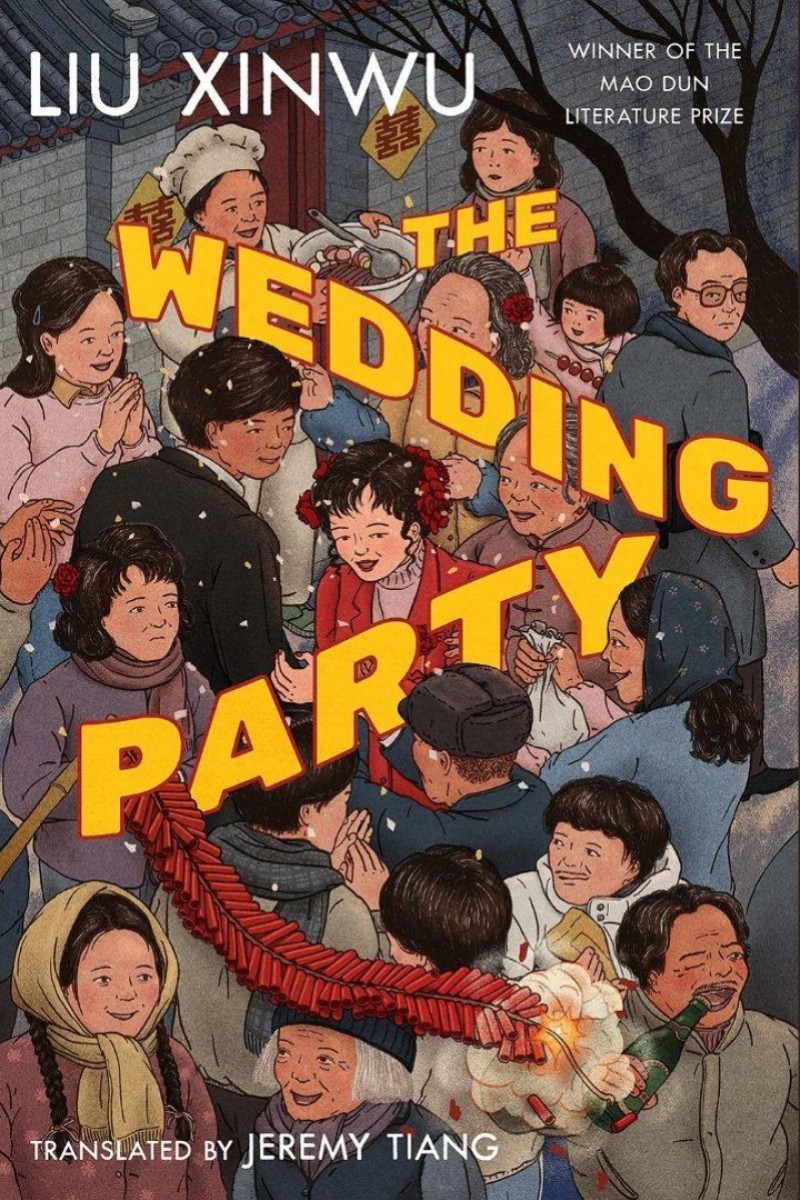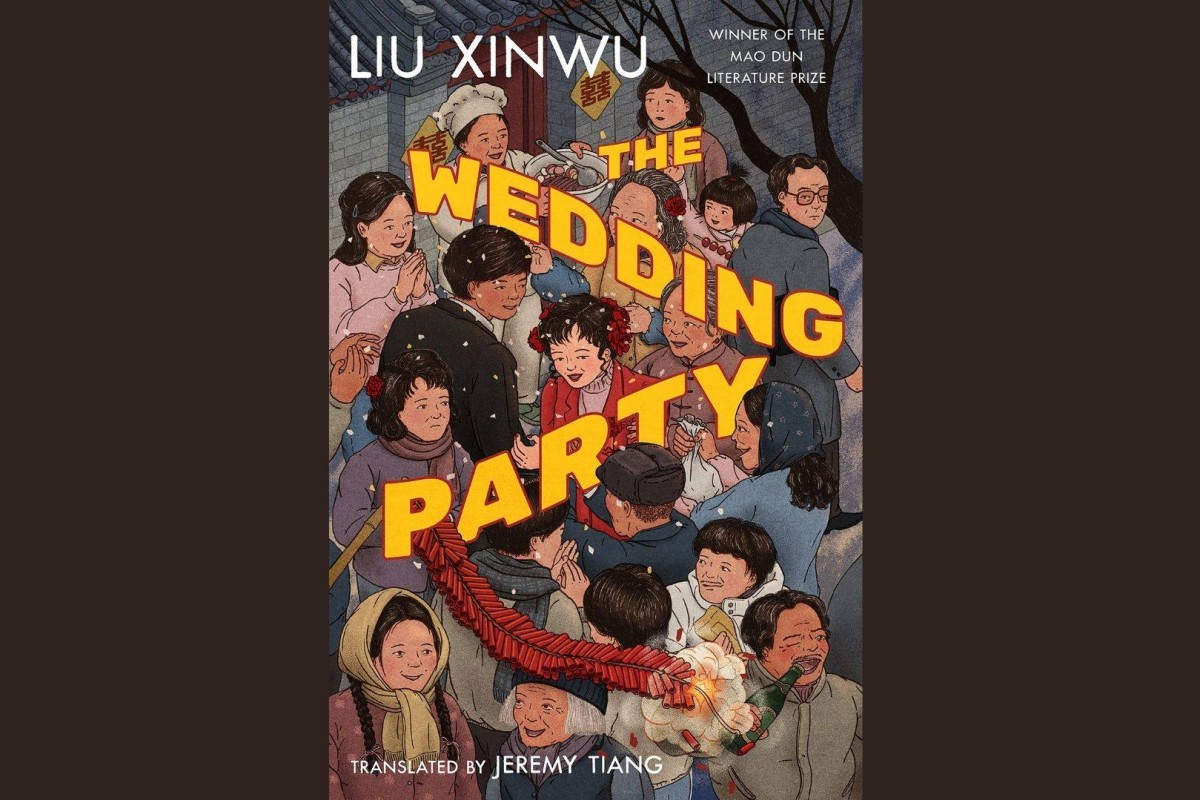
Study Buddy (Challenger): Liu Xinwu’s 1984 novel ‘The Wedding Party’ is a tale of Beijing hutong life
- Study Buddy Challenger is for students who want to take their understanding to the next level with more difficult vocabulary and questions that will test their inference skills
- Check your reading comprehension using the questions below or in the linked Kahoot! game
 Cover of Liu Xinwu’s The Wedding Party, translated into English by Jeremy Tiang. Photo: Amazon Crossing
Cover of Liu Xinwu’s The Wedding Party, translated into English by Jeremy Tiang. Photo: Amazon CrossingContent provided by British Council
Read the following text, and answer questions 1-9 below:
[1] A happy winter scene, a smiling close-knit community, good food and a little alcohol. The cover of the first English translation of Liu Xinwu’s 1984 novel The Wedding Party might have you thinking this 400-page novel is a piece of light nostalgia set amid the old hutong alleyway communities of Beijing’s ancient Drum and Bell Towers district.
[2] Liu also dangles the lure of easy entertainment in the first few pages, telling readers the novel will deal with “the mundane aspects of life”. And in many ways, it does – a wedding surrounded by fractious and often comical relations among neighbours, parents, children and in-laws. But these events and interactions are ultimately “mundane” in a similar vein to a Dickens or a Dostoevsky novel: beneath the seemingly inconsequential swirl jealousies, resentments and trauma.
[3] It is 7am, Sunday, December 12, 1982. Auntie Xue is busy preparing a wedding celebration for her youngest son. Outside the hutong, life is changing in China. Ten years previously, a hutong wedding would have meant “handing out some candy and then calling it a day”.
[4] Now, we are in a rapidly evolving world of opportunities. Think colour portraits from the China Photo Studio on Wangfujing, a hired car and chauffeur, an imported Swiss watch for the groom. But Auntie Xue, falling heavily into debt, is skipping medicines to buy beef for the banquet and special cigarettes for the guests. Making an impression has become expensive.
[5] The novel includes a vast cast of widely representational characters: a chef, a Peking opera performer, a cadre, a professor, a student, a country girl come to town, a loud-mouthed opinionated granny, some wastrel “hutong hooligans” (young men of few prospects). All are classic Beijing types with their own place in the hutong, or as Auntie Xue says, “every radish in its own hole”. And all with dreams and hopes, whether to make a genuine love match, a successful private cobblers’ business, or a move away to a newly built flat with its own bathroom and kitchen.
[6] The Wedding Party is initially a lament for a more communal, “authentic” life before anonymous high-rise buildings sprout in remote suburbs. All Beijing life interacts within the hutong, but as Liu soon shows, the reality of hutong life can be cold, argumentative and claustrophobic. It forms the perfect Petri dish for the novelist, as Liu’s initial semblance of nostalgia belies his insightful social commentary.
[7] You embark on The Wedding Party much like you might arrive at a celebration of extended family, friends and neighbours – with hope, joy and good humour. As events proceed, there are dark moments and muttered grumbles alongside bitter memories of the past.
[8] Liu also weaves in a subplot to show the continuity of life in these laneways, the eternal spats and fights, communities regenerating and adapting constantly to circumstances. He has his panoply of characters reflect their life choices and fates, concluding that the “Bell and Drum Towers will remain as eternal witnesses to history and destiny ... awaiting the next moment, the next day, the next month, the next year, the next generation”.
Source: South China Morning Post, January 9
Questions
Play a Kahoot! game about this story as a class or with your friends by clicking on the link here.
Or play on your own below to test your understanding:
1. Where in Beijing does the story take place according to paragraph 1?
2. In the last sentence of paragraph 2, the writer uses quotes around the word “mundane”. What does that show about the events in the novel?
3. According to paragraphs 3 and 4, how does the book depict how hutong wedding costs have changed? (2 marks)
4. What is meant by the expression “every radish in its own hole” in paragraph 5?
A. Each person has a position in the hutong.
B. Different personalities can be found in the hutong.
C. The hutong is the place where people have found success in life.
D. none of the above
5. Find a word or phrase in paragraph 6 that refers to a place or situation in which something can be examined.
6. Who does “you” in paragraph 7 refer to?
7. Decide if the following statements about The Wedding Party are True, False or Not Given in the text.
(i) Many of the characters in the novel are a reflection of the everyday people one might encounter in a hutong in 1980s Beijing.
(ii) The main plot revolves around how communal living in China has changed in the last 10 years.
(iii) In the story, Auntie Xue’s family and friends eventually come together to help her out of her financial predicament.
(iv) The author uses a wedding event and the colourful characters in the community to examine the intricacies of living in a hutong.
8. Match the words from the text with their antonyms. (4 marks)
9. Which genre of books does The Wedding Party most likely fall under?
A. memoir
B. historical fiction
C. review
D. graphic novel
Answers
1. amid the old hutong alleyway communities of Beijing’s Drum and Bell Towers district
2. It shows they are not as ordinary as they seem.
3. A hutong wedding in 1982 is shown to be so expensive that it can put people into debt, while weddings in the past would have meant giving out some candy and nothing more.
4. A
5. Petri dish
6. the reader
7. (i) T; (ii) F; (iii) NG; (iv) T
8. (i) D; (ii) A; (iii) B; (iv) C
9. B
